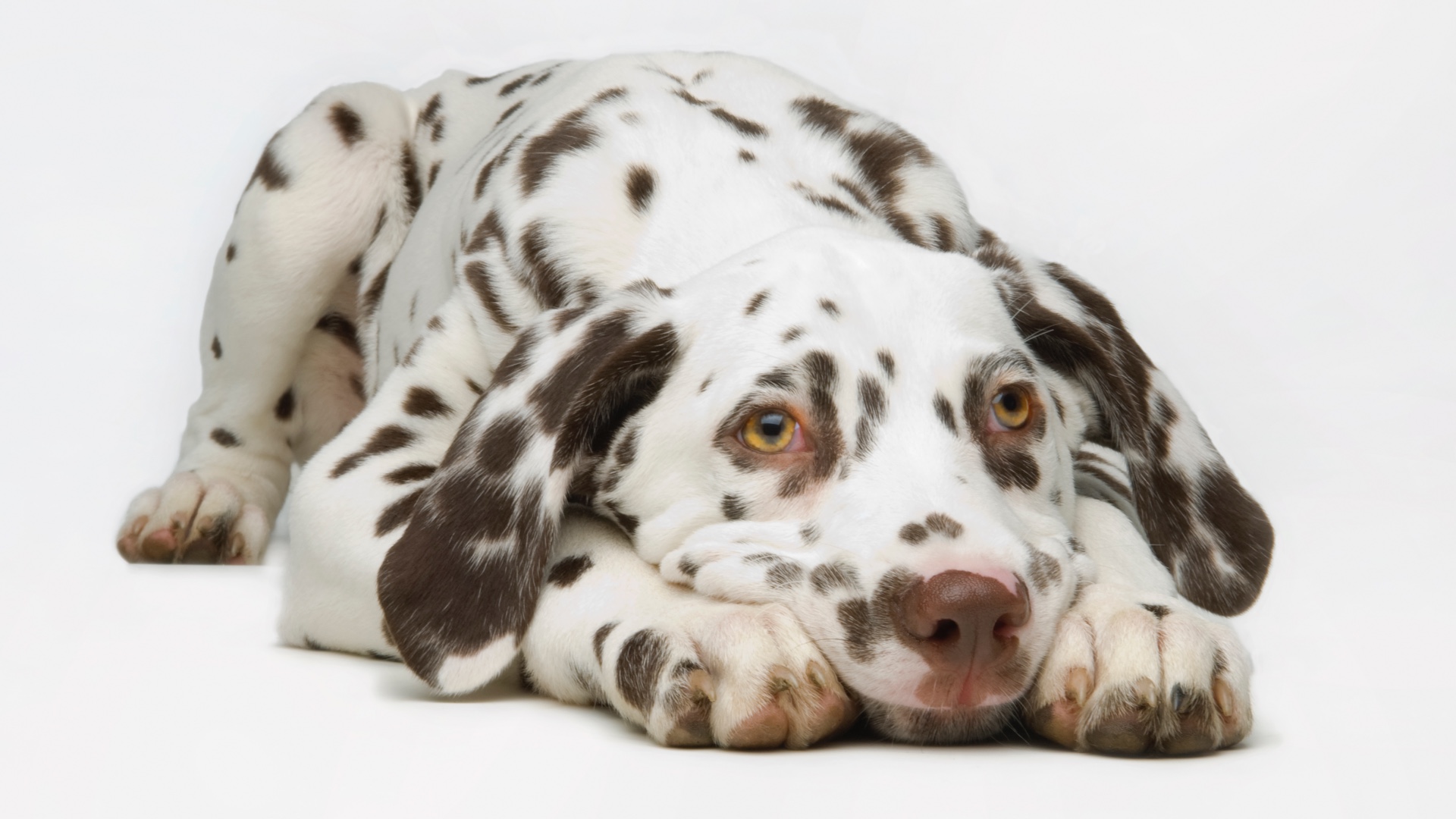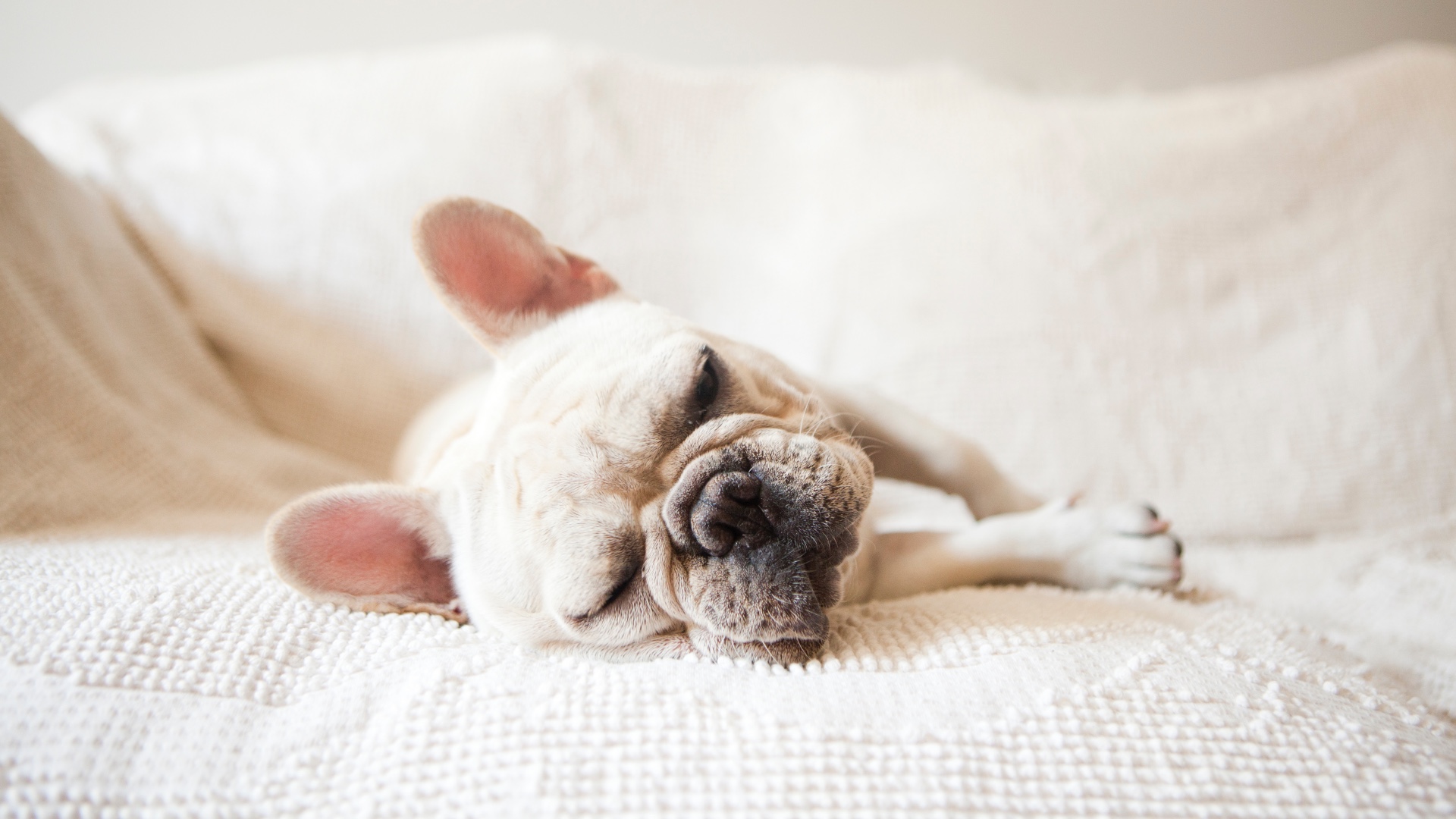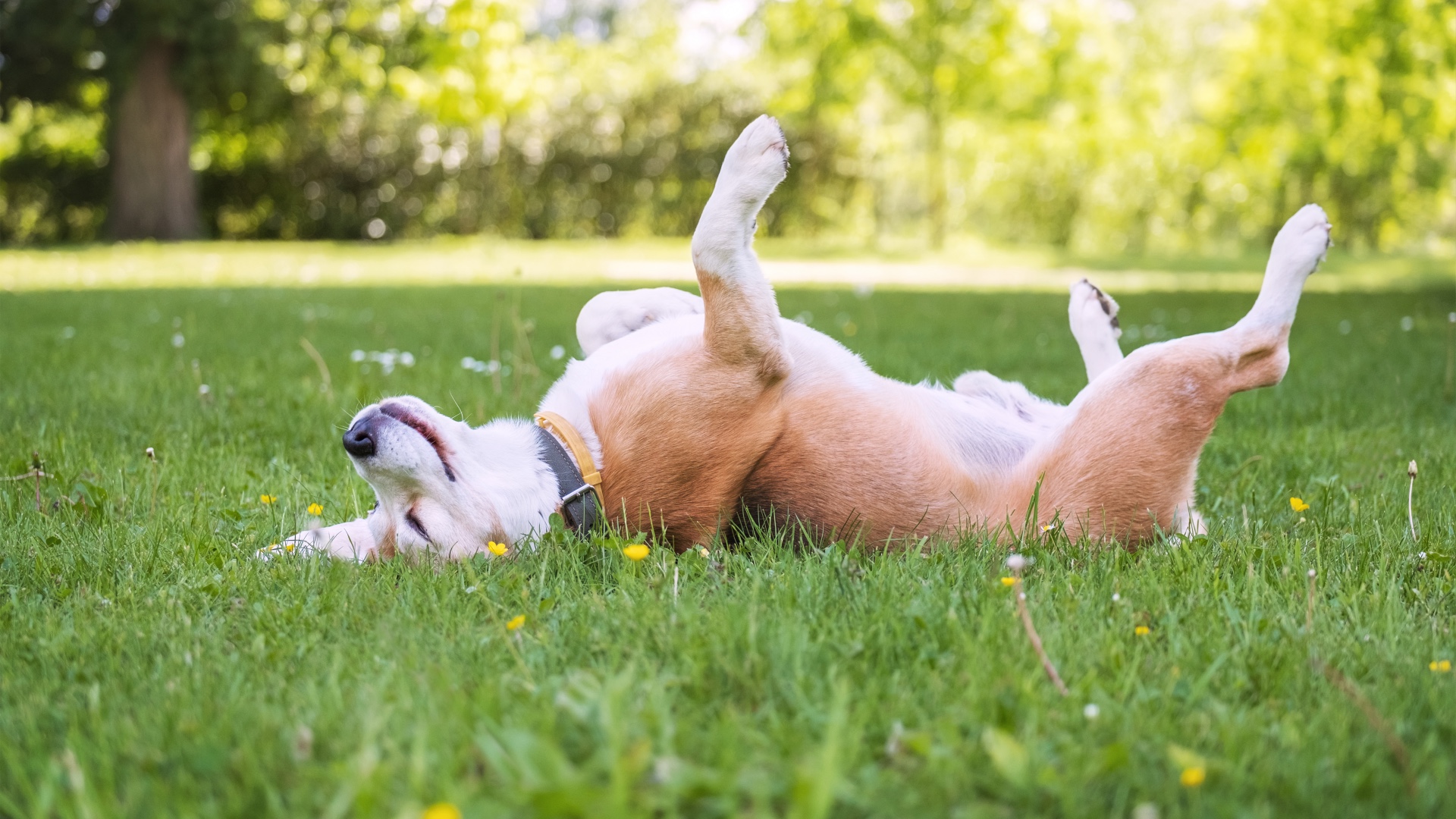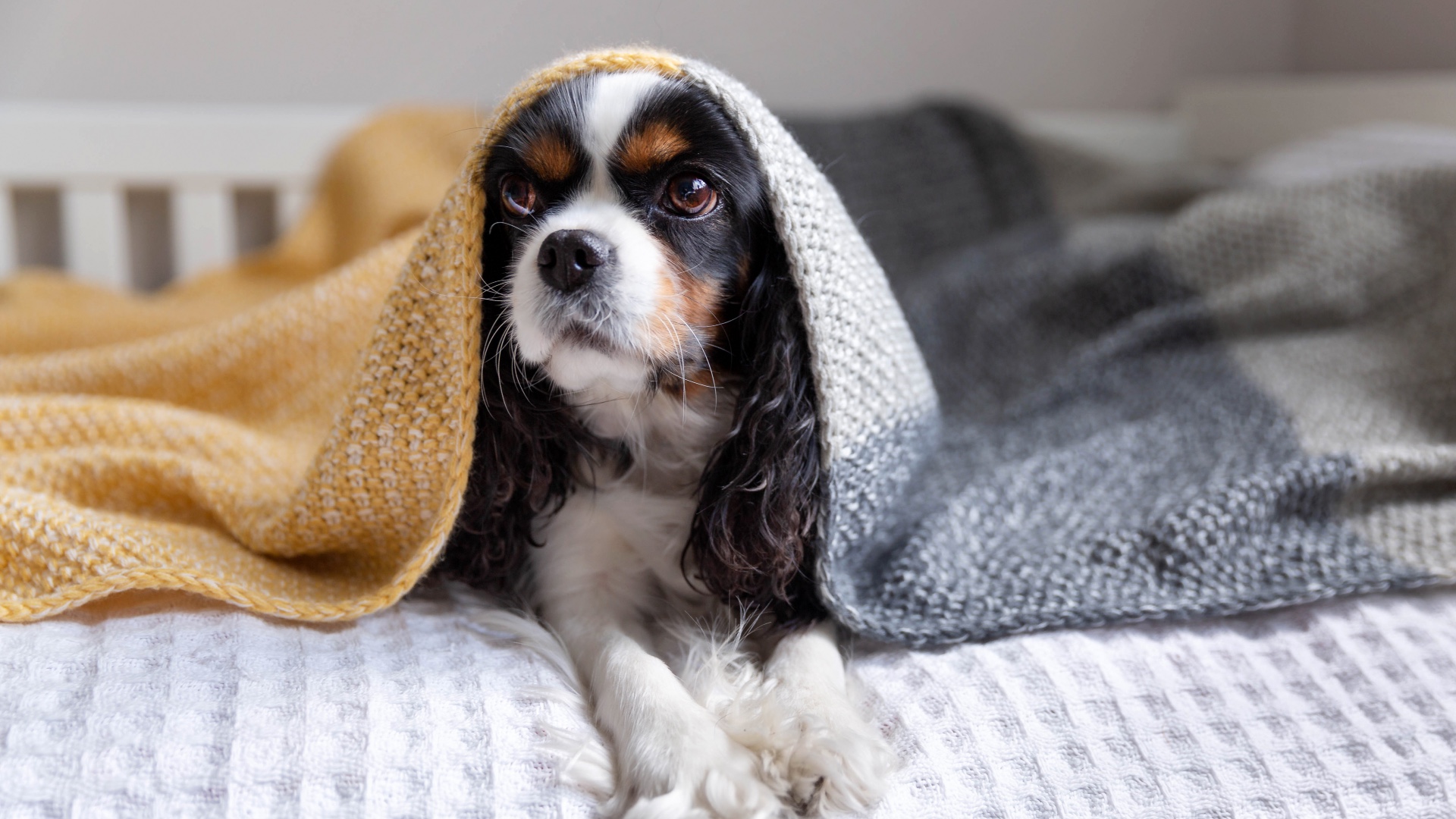Seven dog sleep positions and what they mean
Get to know these common dog sleep positions so you can better understand your four-legged friend.

Did you know that learning about your dog’s sleep positions can give you a whole host of insight into your precious pooch’s wellbeing?
Of course, just like humans, the position in which your dog catches some ZZZs can vary from one day to the next. On the surface, the sleep stance might look cute and comfortable or downright comical and chucklesome, but there’s a deeper meaning behind each slumber style.
For example, maybe they like to be curled up tight in a ball in one of the best dog beds money can buy? Perhaps your dog sleeps in your bed on their side? Or maybe, they like to catch some shuteye with their paws in the air? However you look at it, understanding their sleep position can reveal whether they’re feeling hot, in a deep and restful sleep, or — as one study published in the journal Animals found — if they’re feeling anxious.
So, to better understand your fur friend, keep scrolling to discover seven dog sleep positions and just what they mean. Or, if you’re wondering ‘why is my dog sleep barking’ and whether or not this is normal, see our expert-led guide on just why this could be.
The lion's pose

Lion’s pose sleepers are protective and devoted, ready to spring into action at a moment's notice.
“If you see a dog in a lion pose – with his paws stretched forward and head resting on his paws like the statues of reclining lions in front of some government buildings – the dog is apt to be simply dozing and not in a deep sleep state”, says Dr. Stanley Coren, author of the book, 'Do Dogs Dream?'
Dogs will often adopt this pose when sleeping at your feet. The upright position allows for rest, but the muscles don’t fully relax, allowing them to spring up quickly if something piques their attention.
Get the best advice, tips and top tech for your beloved Pets
2. The side sleeper

The most universally loved sleeping position of both humans and dogs, if your pooch sleeps on their side with their legs extended, they’re likely feeling safe and comfortable.
Not only does a side sleeping position indicate trust in their environment, it also aids in deep and restful sleep. Professional dog trainer Jen Jones, says, “This position is also where you’ll often notice ‘sleep running’ and twitching during your dog’s dreams, as their paws are loose and free to move.”
Still pondering why your dog is twitching in its sleep? See our vet’s guide to what’s normal and when to be concerned.
3. The donut

Have you ever spotted your dog curled up in a tight ball? The donut is one of the most common dog sleep positions, and according to Dr. Katherine Houpt, they do this to help them feel small and regulate their body temperature.
“When dogs are really warm, they will stretch out on cool surfaces, but most of the time they curl up,” says Houpt. “I think that it makes them feel that they are less vulnerable.”
Dogs that favor the donut tend to have caring but anxious natures, and it’s also a common position for puppies or dogs that are getting used to a new home.
4. The Superman

Favored by the playful and energetic, the Superman is the preferred resting pose for the tuckered-out pooch who wants to grab a few winks to recharge before running, jumping, and flying through the air again, Super-Pup style!
It also provides a quick way to cool down, according to Dr Coren. “The fur on the dog's underside is not as deep and insulating as the fur on the rest of his body,” he says. “What you call the ‘Superman position’ – with limbs outstretched and belly against the floor – is also a response to a warm environment, but usually occurs in situations where the surface that the dog is lying on is relatively cooler than the air around him.”
5. The belly up

This paws-up pose is the ultimate sign of trust and relaxation. When you see your dog lying on its back with its belly up and all four paws in the air, you can be sure they don’t have a care in the world.
Exposing their tummy leaves a dog incredibly vulnerable, and makes it harder for them to get to their feet quickly, so you know when you see your dog in this position that they’re at ease in their environment.
It’s also a great pose for lowering their body temperature, according to Jones. “Dogs sweat through their paws, and their belly is a source of heat. When they sleep on their back with their belly in the air and paws up, they are trying to keep cool.”
6. The burrower

Do you have a dog who’s always trying to sleep under the covers of your bed? If so, you likely have a burrower on your hands. Burrowers are affectionate but need to feel safe, so they’ll often search for comfort and security in the form of clothes, blankets, and pillows.
Burrowers tend to need a lot of love, attention, and affection to help them settle at night. In the wild, most dogs would sleep together in close quarters to help them feel safe, so when tucking your pup into bed, make sure they’re surrounded by items they can snuggle into.
If you have a burrower on your hands, you’ll most likely have a pup who likes to wake you up at the crack of dawn to make sure you’re still right by their side. Wondering how to get your dog to sleep later in the morning? We’ve got all the answers.
7. The cuddler

Loved by pet parents everywhere, this adorable sleeping position is number one among affectionate and loving dogs who like to sleep on laps or curled up next to a fellow furry friend. If you find your dog always wanting to be snuggled up with you, it’s a sign of love and bonding.
“The tendency that many dogs have to cuddle when they sleep is a holdover from when they were puppies”, says Dr. Coren “As the dogs mature, sleeping that way against another living thing merely becomes a sort of learned feeling of comfort held over from puppyhood.”
However, if you’re not a great sleeper or suffer from allergies, do check out our guide on how to get a dog to sleep in a different room.
Want to find out, 'Why does my dog lay on top of me?' You might find this feature useful.

Kathryn is a freelance writer who has been a member of the PetsRadar family since it launched in 2020. Highly experienced in her field, she's driven by a desire to provide pet parents with accurate, timely, and informative content that enables them to provide their fur friends with everything they need to thrive.
Kathryn works closely with vets and trainers to ensure all articles offer the most up-to-date information across a range of pet-related fields, from insights into health and behavior issues to tips on products and training.
When she’s not busy crafting the perfect sentence for her features, buying guides and news pieces, she can be found hanging out with her family (which includes one super sassy cat and a kitten), drinking copious amounts of Jasmine tea and reading all the books.
She has written for a range of publications, including Fit&Well, Top Ten Reviews, LiveScience, Goodto, and Product Hunt.
- Becks ShepherdFreelance Journalist
